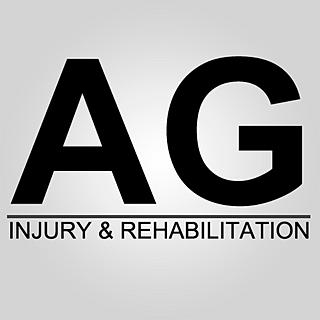What is a Rotator Cuff Injury?
- Arun Gray
- Mar 19, 2018
- 4 min read

Shoulder injuries are common because of the range of movement available and the amount of muscles, ligaments and tendons that make up the joint. If you've every had a rotator cuff injury/issue then you'll know it's REALLY annoying.
It often causes a dull achey pain that you notice doing pretty much any activity, even washing the posts or brushing your teeth. As you can imagine, if you regularly hit the gym it can be a proper pain in the a#$e!
What is it?
The rotator cuff (RC) is made up of four muscles; Supraspinatus, Infraspinatus, Subscapularis and Teres Minor and they surround the shoulder joint. Although they all do slightly different things, their main use is to hold your shoulder in the correct position within the joint. Surgeons argue that although the issue may be caused by one individual muscle of the group, the whole RC must be treated to resolve the problem.
Injury to the rotator cuff can be due to a sudden trauma however will usually start as inflammation, otherwise known as rotator cuff tendinopathy. This can be caused by a number of things but gradually worsens with time. If it's not addressed at this stage it can lead to partial tears in the connective tissue which can progress into complete tears; so it is clearly important to treat the condition early before it worsens and prolongs your rehab.

According to PhysioRoom, there are three main causes of micro trauma to the RC:
1. Primary Impingement
The Cora-Acromial arch forms a bridge over the rotator cuff muscles. It is made up of bones and ligaments and is lined by a sac of fluid called the Subacromial bursa. The space below the bridge that is available for the RC is called the subacromial space.
Many people with have a small subacromial space naturally, but conditions such as osteoarthritis can reduce the size of it. Repetitive overhead activities (such as throwing, painting or manual labour) can cause the RC to be squashed against the arch and cause inflammation; further reducing the amount of space the RC can freely move within.
2. Secondary Impingement
Again, due to the range of movement available at the shoulder joint many people will suffer from shoulder instability. This can again be due to a number of factors, some being repetitive use, poor posture or inactivity.
This means the RC has to overwork to make sure the shoulder can stay in position. This causes it to become inflamed. Eventually the RC becomes fatigued and weak and will not be able to prevent the head of the humerus from squashing against the coraco-acromial arch.
3. Overstraining
During forceful throwing actions (tennis serve, baseball pitch etc). With this repetitive action, the cuff is prone to being overloaded while it both powers the movement and acts as a brake to maintain control of the arm/shoulder. This overload can lead to inflammation and tissue breakdown.
Symptoms
Symptoms of RC injury include weakness, a reduction in range of movement and obviously pain/discomfort. Generally, the more severe the injury, the more painful it becomes. Whilst in the inflammation stage, you may only experience pain when performing overhead activities, however if you have suffered a tear, you may experience difficulty sleeping in certain positions.
Diagnosis
Therapists have a number of tests to determine a diagnosis of your injury. They will assess your shoulder stability, strength and range of movement. An x-ray may give an explanation of why the injury has occurred (position of the bones around the shoulder joint) however an MRI scan is more useful to assess whether or not there is a tear. An ultrasound scan may also visibly show any tears.

Treatment
Treatment depends on the severity of your injury. If you have suffered a tear, surgery may be the most effective method of treatment.
Where no tear is present, physiotherapy can be effective in treating inflammation and chronic degeneration.
First, inflammation must be treated. The most effective methods of reducing this is through cryotherapy (applying ice) and taking non steroidal anti inflammatory drugs such as Ibuprofen which your doctor will be able to prescribe you. Some anti-inflammatory gel might be useful as it can be applied directly to your shoulder and avoids any side effects of the traditionally ingested medication.
Ice/cryotherapy reduces swelling and any bleeding caused by micro tears within the rotator cuff. The Aircast Cryo Cuff is a great tool in reducing inflammation. It isolates the joint whilst keeping your arm supported. As the cold temperature is distributed throughout the whole cuff, it may be preferred over an ice pack which typically can only be applied to one part of the shoulder at any one time.
Sometimes a corticosteroid injection may be administered by a doctor, however traditional methods will often be tried before this.
Once inflammation is controlled, your therapist will try to regain your shoulder's range of movement and rebuild your strength and stability.
Although rotator cuff injury is an extremely common cause of shoulder pain, you should always be fully assessed by a qualified therapist to rule out any other injuries, before attempting any treatment or rehabilitation programme.









Comments